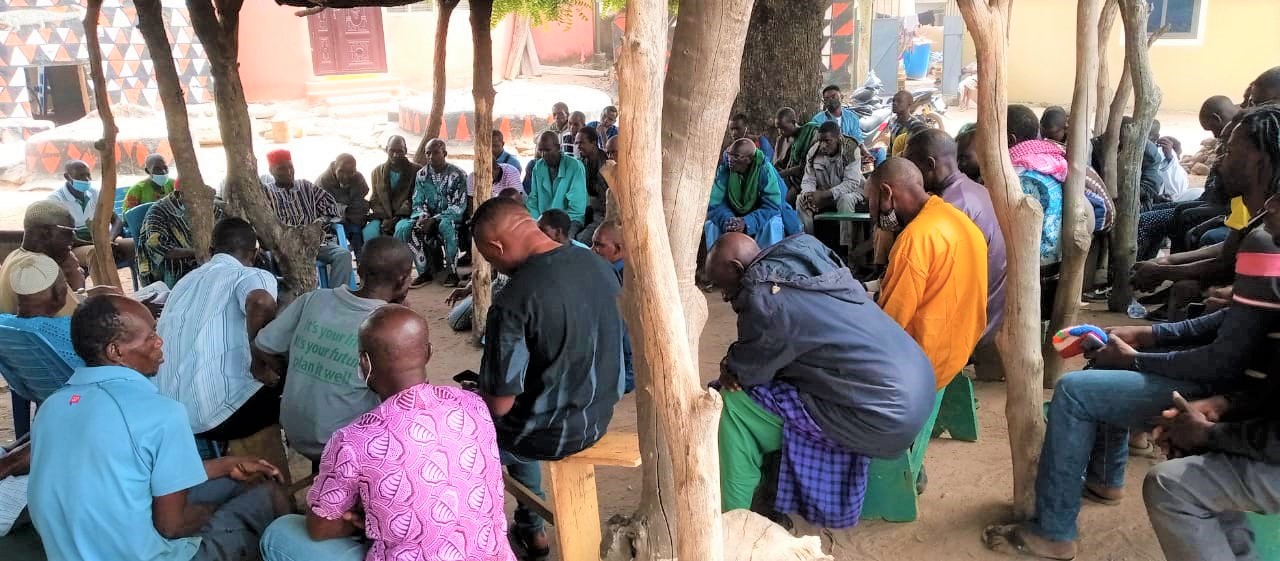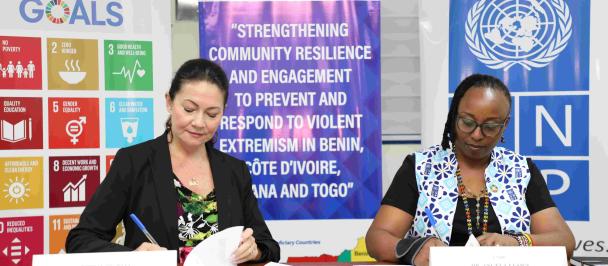The youth in the engagement session with the community to promote co-existence and peace. Photo: Green Youth Association of Kajelo.
Over the past few years, the dynamics of violent extremism and conflict have increasingly become complex within the West African sub-region. These increasing complexities and drivers require a robust approach to tacking the trend.
The United Nations (UN) Plan of Action to Prevent Extremism recognizes the inclusion of women, youth and communities in strategic approaches as vital to the success of the measures against extremism and conflict.
As a result, the UN Development Programme (UNDP), with support from the governments of Netherlands and Sweden, has been mobilizing stakeholders such as youth and women groups, traditional authorities, Civil Society Organizations (CSOs) and state institutions at the local level, especially in border communities to support efforts towards preventing violent extremism and conflicts through training and engagements.
One of such groups who have heeded to the clarion call of UNDP and partners is the Green Youth Association of Kajelo in the Upper West Region of Ghana.
The group is leveraging the training they had from UNDP to engage stakeholders over clashes between a local community and Fulbe herders. The dialogue sessions have expanded to include the paramount chief of the Paga traditional area who has lent his support to resolve the clashes between herders and the local communities in his traditional area.
“After participating in the sensitization on peacebuilding and preventing violent extremism, organized by UNDP, we realized that some of the strategies we learnt could be deployed to help solve the longstanding conflict between the herders and community members in the Paga Traditional area. This led us to replicating the engagements in the community’’, said Pwasam Frederick, the President of Green Youth Association of Kajelo.
These series of engagements which are aimed at promoting co-existence between the local people and the Fulbe people is already yielding results and contributing to peaceful co-existence among people in the area.
The feuding factions have resolved to deepen engagements and promote non-violent ways of settling disputes. As a result, the Fulbe herders have elected a leader to facilitate their continuous dialogue with the community to prevent further clashes.
“We have demonstrated through this engagement that dialogue is the only way we can achieve peace. Therefore, we must support our leaders so that together we can work to coexist with each other peacefully”, noted Pe Charles Awiah Awampaga II, Paramount Chief of the Paga Traditional Area,
The success chalked by the Green Youth Association of Kajelo in promoting non-violent ways of handling grievances is not only an indication that dialogue is best approach towards sustainable peace, but it also reinforces the role young people can play in promoting peace and harmony among communities.

 Locations
Locations


